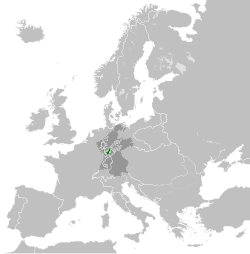Principality_of_Frankfurt
Grand Duchy of Frankfurt
State
The Grand Duchy of Frankfurt was a German satellite state of Napoleonic creation. It came into existence in 1810 through the combination of the former territories of the Archbishopric of Mainz along with the Free City of Frankfurt itself.
This article needs additional citations for verification. (July 2023) |


